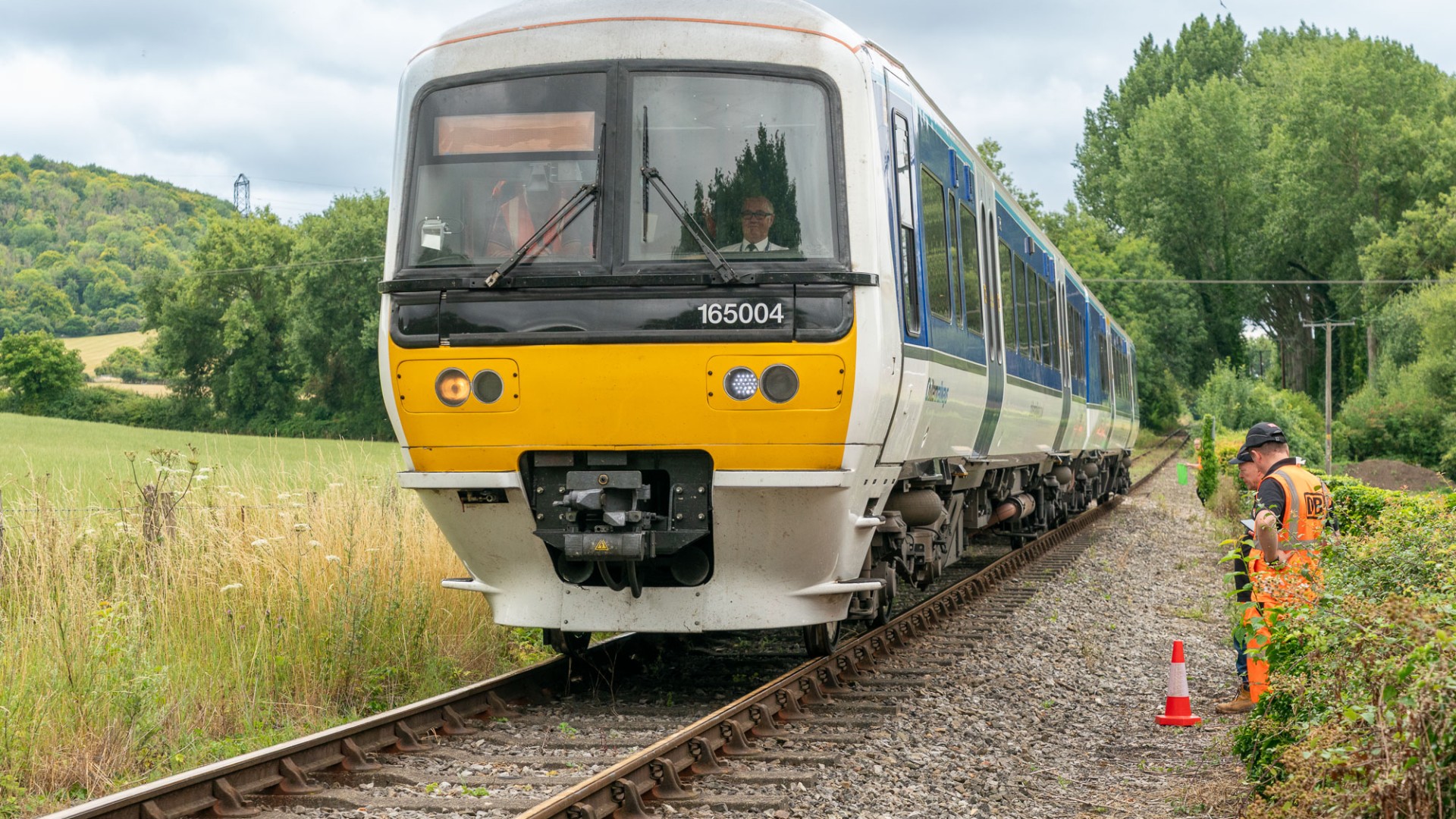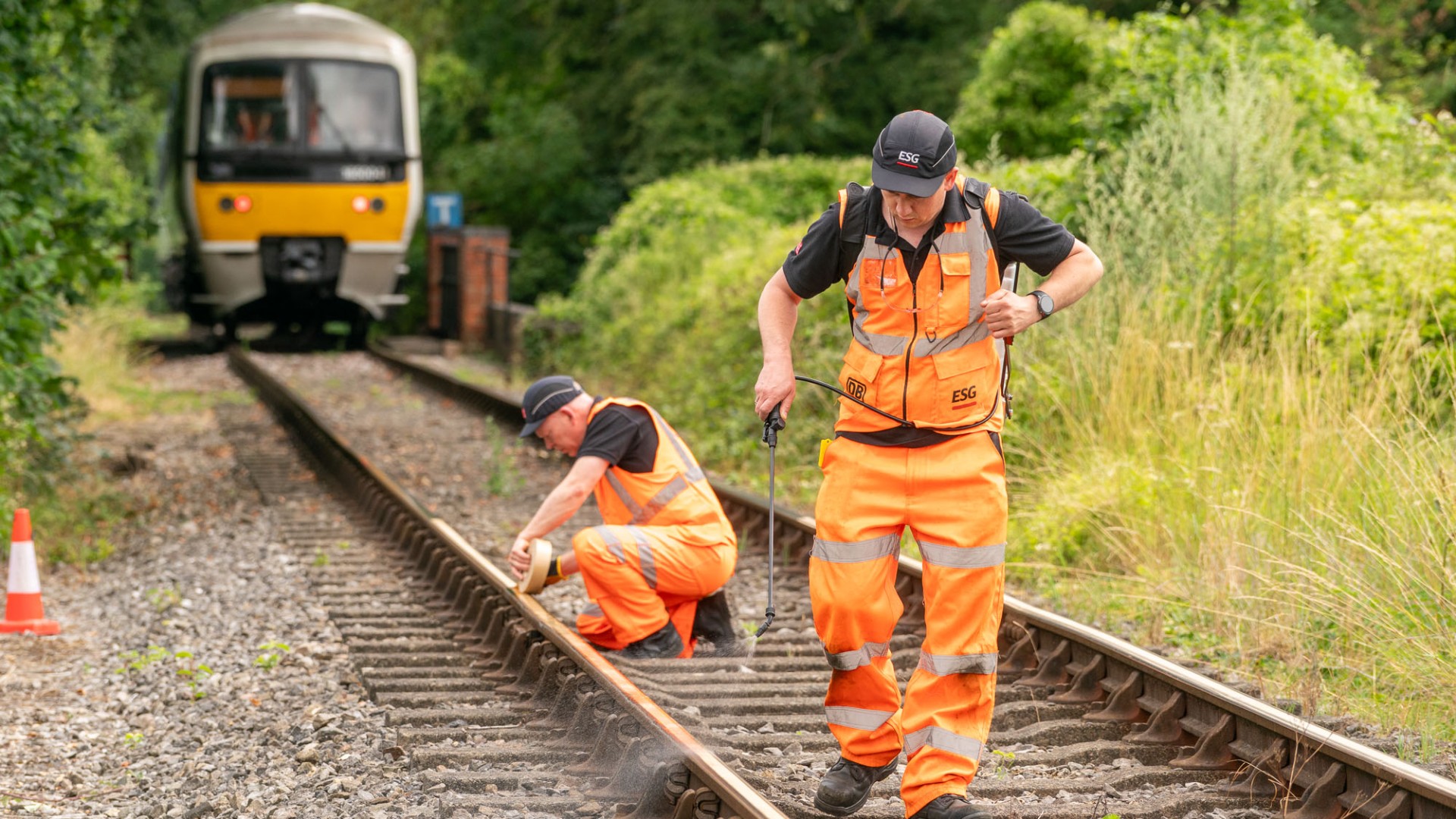
The project team from Knorr-Bremse Rail Systems, Chiltern Railways, Angel Trains, and RSSB, joined by DB ESG, with Class 165 unit 165004 at Chinnor & Princes Risborough Railway following dynamic testing.
Dynamic testing of a new Low Adhesion Monitoring System has been successfully completed on the heritage Chinnor & Princes Risborough Railway.
This innovative solution, developed by Knorr-Bremse Rail Systems and jointly engineered with Chiltern Railways to fit on a class 165 Diesel Multiple Unit (DMU), has the potential to provide the rail industry with real-time actual adhesion values for the first time, offering a transformative approach to understanding and managing railhead conditions within the rail-wheel interface.
The new system will be able to tell how “slippery” the track actually is; not just the fact that it was slippery - when Wheel Slip Protection (WSP) activity occurs.
With support from the asset owner, Angel Trains, the system will now undergo a year-long network trial. This trial, will for the first time in the industry, provide an actual value of the adhesion when WSP is active. This provides critical data across varying operational conditions, including the challenging leaf fall season and adverse weather events, to move towards pro-active adhesion management.
The insights gathered will directly aid the RSSB’s Adhesion Research Group (ARG) in improving the industry’s understanding of low-adhesion conditions during braking.
CONTACT
Melksham
SN12 6TL
United Kingdom
John.May@knorr-bremse.com
The reason why this trial is important is that it helps train operators and Network Rail understand when and where there is low adhesion in near real time. Hot spots of low adhesion can be identified so that drivers can be made aware and rail head cleaning can be planned.
John May – Knorr-Bremse Rail Systems Digital Services Business Development Manager
The class 165 unit chosen for the trial, 165004 and already equipped with Knorr-Bremse’s MGS2 Wheel Slide Prevention equipment, has been further enhanced with Knorr-Bremse’s cutting edge MGS3 software and additional instrumentation and bespoke components developed at the company’s Melksham headquarters.
As the First in Class (FiC) unit fitted with this low adhesion monitoring system, this train will gather real-time adhesion data without interfering with its existing systems. The information collected will help pinpoint low adhesion ‘hot spots’ to enhance rail safety and performance across the network.
John adds: “The Knorr-Bremse equipment will run continuously capturing low adhesion events not just for autumnal conditions when the leaves fall, but also during wintery conditions and when exceptional weather events happen throughout the year.”

The trial will provide Knorr-Bremse with the data to calculate real time adhesion levels. Working with the ARG, supported by the University of Huddersfield, and for the first time for the industry, they will be able to better understand the effect of low adhesion on train performance. Should the trial be successful, then it is hoped more operators could be involved next year, with a wider fleet rollout commencing in 2026/27.
Mick Milhinch, Knorr Bremse Rail Systems Adhesion Management Business Development Manager, said: “This project is of massive significance because it marks the start of the path towards pro-active adhesion management. Namely, not waiting for a train to slip or slide and instead preventing it in the first place.”
Louis Schmandt, Technical Engineer at Chiltern Railways, ARG member and Chiltern’s project lead, said: “This project shows what can be achieved through cross-industry collaboration in adhesion research and highlights the important role of ARG in helping to develop and implement solutions that have the potential of transforming the railway of the future.Through Chiltern’s and Knorr Bremse’s mutual enthusiasm and strong initiative to make this solution work, we could be one step away from a seasonally agnostic railway, where the infamous problem of “leaves on the line” is firmly consigned to the history books.”

Matt Prosser, Asset Management Director at Angel Trains, said: “Completing this trial is another step forward in how the rail industry uses technology to drive improvements. It also shows how working together can lead to smart solutions that boost performance and safety across the network.”
Paul Gray, Rail Safety and Standards Board, Professional Lead Engineering Research and Interim Chairman of RSSB’s Adhesion Research Group, said: “This work is an excellent example of bringing together new technology, railway expertise and experience with academic rigour to offer a step change in capability to assess low adhesion conditions along a route.”